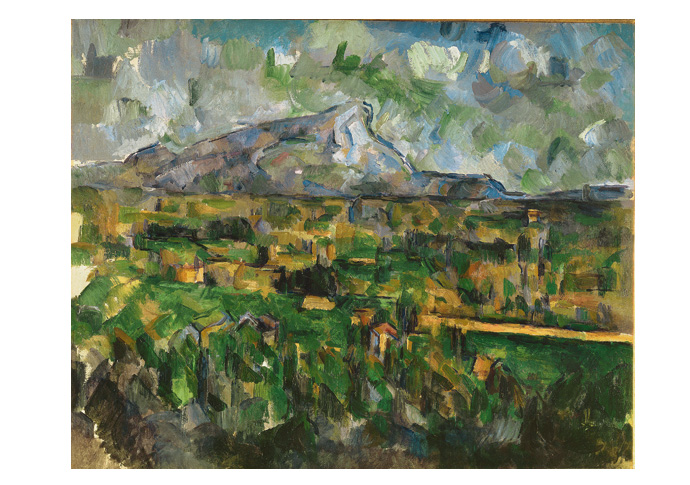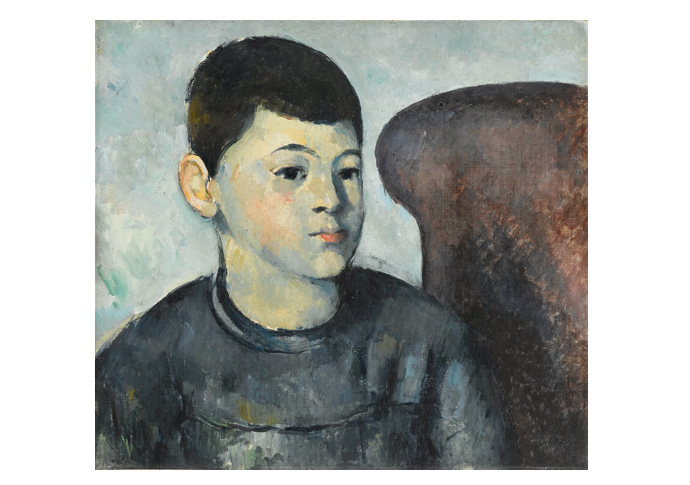‘Greatest of us all’
Tate Modern’s in-depth look at Paul Cezanne is outstanding, as John Evans reports
Thursday, 1st December 2022 — By John Evans

Paul Cezanne, Mont Sainte-Victoire 1902-6, Philadelphia Museum of Art, Gift of Helen Tyson Madeira, 1977, 1977-288-1
IF one room can sum up the importance of an individual artist, number 10 in this Tate Modern exhibition is it.
Part of a blockbuster of paintings, watercolours and drawings by Paul Cezanne (1839-1906), it demonstrates his hold over fellow artists, with works of his once owned by none other than Pablo Picasso, Jasper Johns and Henri Matisse.
It was the latter who said: “In moments of doubt, when I was still searching for myself, frightened sometimes by my discoveries, I thought, ‘If Cezanne is right, I am right’; because I knew that Cezanne made no mistake.”
And Claude Monet referred to Cezanne as the “greatest of us all”.
This latest show features more than 80 works from collections worldwide, including some 20 never exhibited in the United Kingdom before, for example, The Basket of Apples c1893 from Chicago, Mont Sainte-Victoire, 1902-06, from Philadelphia, and Still Life with Milk Pot, Melon, and Sugar Bowl, 1900-06, from a private collection.

Paul Cezanne, The Bather 1885, Lillie P Bliss Collection, Acc no 1 1934, New York, Museum of Modern Art (MoMA). © 2022, Digital image, The Museum of Modern Art, New York/Scala, Florence
As the Tate experts say, this: “…tells the story of a young ambitious painter from the southern city of Aix-en-Provence, determined to succeed as an artist in metropolitan Paris in the 1860s, yet constantly rejected by the art establishment. It reveals how he befriended Camille Pissarro and associated with the impressionists in the 1870s, but soon distanced himself from their circle and the Parisian art scene to forge his own path, returning to his native Provence in relentless pursuit of his own radical style”.
Paul Gauguin once owned Still life with Fruit Dish, 1879-80, on loan from New York’s Museum of Modern Art, for this fascinating retrospective.
And sculptor Henry Moore had Three Bathers, which can be seen early in this show but, in addition, a whole room is devoted to the bather paintings, to which Cezanne would return again and again, among them the National Gallery’s 1894-1905 Bathers, a late work and one his larger paintings.

Paul Cezanne, Portrait of the Artist’s Son 1881-2, Paris, Musée de l’Orangerie, Jean Walter and Paul Guillaume Collection
This exhibition traces Cezanne’s development from works produced in his 20s and throughout his career, portraits, still lifes and landscapes, drawings and even a couple of sketchbooks.
An entire room is also devoted to various depictions of Mont Sainte-Victoire, a subject which so fascinated him he produced more than 80 images of the mountain which overlooks Aix-en-Provence.
Other highlights to be seen include outstanding loans such as Seated Man 1905-6 from the Museo Nacional Thyssen-Bornemisza, Madrid, and Portrait of the Artist’s Son, 1881-2, from the Musée de l’Orangerie in Paris.
As well as son Paul, there are fine portraits of Cezanne’s wife Marie-Hortense Fiquet, including Madame Cezanne in a Red Armchair, c1877, from the Museum of Fine Arts in Boston.
This show oozes quality and is testament to the enduring influence this man has.
• The EY Exhibition: Cezanne, organised with the Art Institute of Chicago, is at Tate Modern until March 12 2023. Visit tate.org.uk or follow @Tate #Cezanne Or call 020 7887 8888.